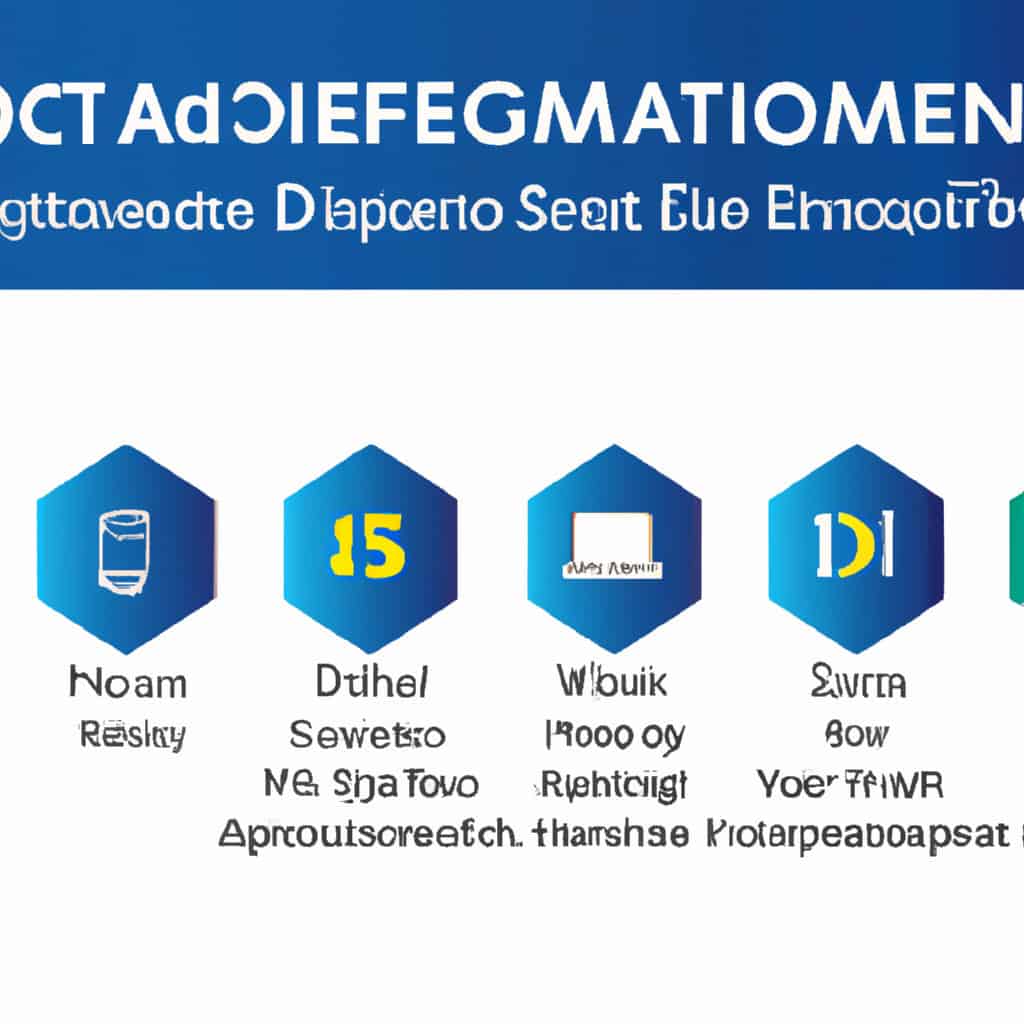Efficiently exchanging data and information between businesses is a critical aspect of smooth operations and effective collaboration. This article presents a curated list of the top 5 EDI (Electronic Data Interchange) software solutions that can simplify and streamline data interchange processes.
These software platforms offer features such as data mapping, secure transmission, integration capabilities, and compliance with industry standards.
By exploring their key functionalities, pricing models, and success stories from businesses that have leveraged EDI software, readers can gain insights into how these solutions enhance supply chain management and optimize data exchange workflows.
Key Takeaways
- Data mapping and integration capabilities are essential features of top EDI software solutions for translating and transforming data formats and connecting and synchronizing data across systems.
- Secure transmission and compliance with industry standards are crucial for protecting data during transfer and maintaining trust among customers and partners.
- Pricing models for EDI software solutions should be considered, including upfront costs, ongoing expenses, and implementation challenges.
- Success stories highlight the benefits of leveraging EDI software for optimizing supply chain management, such as improved accuracy and efficiency in order processing, enhanced visibility and collaboration, automated inventory management processes, and faster order processing times.
Key Features of the Top EDI Software Solutions
The top EDI software solutions offer a range of key features that facilitate efficient data exchange between businesses.
Data mapping is one such feature that allows for the translation and transformation of data formats. This ensures compatibility between different systems, making it easier for businesses to exchange information.
Another important feature is secure transmission. This ensures that data is encrypted and protected during its transfer, safeguarding sensitive information from unauthorized access. This is crucial for maintaining the privacy and security of data.
Integration capabilities are also essential. They enable seamless connectivity with various business systems, allowing for the exchange of data in real-time. This promotes efficiency and enables businesses to make quick decisions based on up-to-date information.
Compliance with industry standards is another key feature offered by top EDI software solutions. This ensures that data exchange follows established protocols, promoting interoperability and reducing implementation challenges. It also helps businesses stay in line with industry regulations.
Secure Transmission and Compliance With Industry Standards
Secure transmission and compliance with industry standards are crucial aspects for effective data interchange and collaboration among businesses. In the digital era, where data plays a central role in business operations, ensuring data security and adhering to industry regulations are paramount.
Data security involves protecting data from unauthorized access, alteration, or destruction, while industry regulations refer to the set of rules and guidelines that businesses must comply with to ensure data privacy, confidentiality, and integrity.
Secure transmission methods, such as encryption and secure file transfer protocols, help safeguard data during its exchange between different parties. Compliance with industry standards, such as HIPAA for healthcare or PCI DSS for payment card industry, ensures that businesses meet the necessary requirements to safeguard sensitive information and maintain the trust of their customers and partners.
Data Mapping and Integration Capabilities
Data mapping and integration capabilities are essential for efficient data interchange and collaboration among businesses.
Data mapping involves transforming data from one format to another, ensuring compatibility and consistency between systems. It allows for seamless integration of data from various sources, enabling accurate and effective information exchange.
Data validation ensures the accuracy and completeness of data exchanged between trading partners.
Integration capabilities enable the seamless connection and synchronization of data across different systems, facilitating real-time updates and improved collaboration.
By leveraging data mapping and integration capabilities, businesses can streamline their data interchange processes, reduce errors, and enhance overall efficiency.
Trading partner integration enables seamless data and information exchange with external entities, fostering strong relationships and collaboration.
Pricing Models for EDI Software Solutions
Pricing models for EDI software solutions are an important consideration for businesses seeking to optimize their data interchange processes and enhance supply chain management. When evaluating the cost of implementing an EDI software solution, businesses need to conduct a thorough cost analysis to determine the overall expenses associated with the implementation. This includes software licensing fees, maintenance and support costs, and any additional implementation services required.
It is crucial to consider both the upfront costs and the ongoing expenses. This may include annual subscription fees or transaction-based pricing models. Implementation challenges can also affect the cost analysis. Businesses may need to allocate resources for training employees, integrating the software with existing systems, and ensuring data security and compliance.
Success Stories: Leveraging EDI Software for Supply Chain Management Optimization
The successful implementation of EDI software for supply chain management optimization has been demonstrated by various businesses, showcasing enhanced data exchange workflows and streamlined operations. Real-life examples of businesses leveraging EDI software for supply chain management optimization include:
-
Company A: By implementing EDI software, Company A achieved a significant reduction in manual data entry, resulting in improved accuracy and efficiency in their order processing.
-
Company B: Through the use of EDI software, Company B successfully integrated their systems with multiple trading partners, leading to improved visibility and collaboration throughout their supply chain.
-
Company C: EDI software enabled Company C to automate their inventory management processes, resulting in reduced stockouts and improved customer satisfaction.
-
Company D: By implementing EDI software, Company D experienced faster order processing times, leading to shorter lead times and improved on-time delivery performance.
These real-life examples highlight the benefits achieved by businesses through the successful adoption of EDI software for supply chain management optimization.
Conclusion
In conclusion, effective data exchange and collaboration between businesses are crucial for smooth operations. The utilization of EDI software can simplify and streamline data interchange processes.
The top EDI software solutions offer features like secure transmission, data mapping, integration capabilities, and compliance with industry standards.
By leveraging these software platforms, businesses can enhance their supply chain management and optimize their data exchange workflows.
The success stories of organizations that have utilized EDI software further demonstrate its benefits in improving efficiency and productivity.
